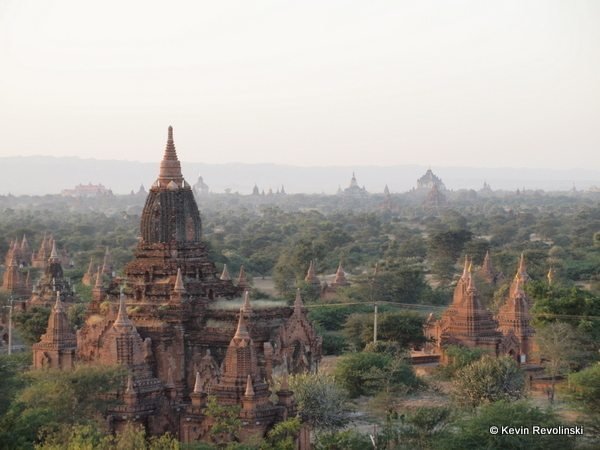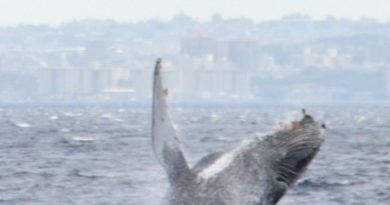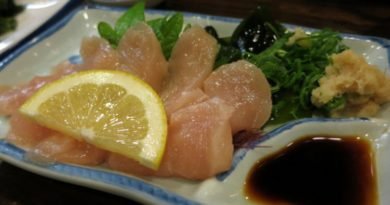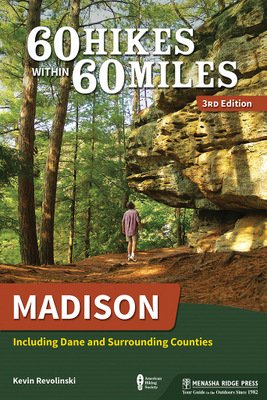Cruising the Heart of Myanmar: The Road to Mandalay
 An hour after coming ashore, I am climbing brick stairs, warped with wear from the elements and the bare feet of the faithful over several hundred years, until I reach the highest level of the pagoda, a narrow walkway that circumnavigates the almost onion-like golden chedi. All around me, stretching for a few miles in every direction, brick and mortar structures of various shapes, sizes and colors, reach to the skies. A field of Buddhist dreams, of earthly hopes aspiring to something higher. Each spire in itself is an attraction but in their abundance the lot of them creates a landscape that elicits gasps.
An hour after coming ashore, I am climbing brick stairs, warped with wear from the elements and the bare feet of the faithful over several hundred years, until I reach the highest level of the pagoda, a narrow walkway that circumnavigates the almost onion-like golden chedi. All around me, stretching for a few miles in every direction, brick and mortar structures of various shapes, sizes and colors, reach to the skies. A field of Buddhist dreams, of earthly hopes aspiring to something higher. Each spire in itself is an attraction but in their abundance the lot of them creates a landscape that elicits gasps.
For anyone unfamiliar with the name, Bagan is a bit of a surprise. Cambodia’s Angkor Wat may be universally recognized these days, its Indiana Jones temples-in-the-jungle atmosphere found its way into National Geographic numerous times and even onto the silver screen. But Bagan? It wasn’t until a fellow traveler, just back from Myanmar and meeting up with me in Bangkok, showed me a single photo of a giant temple on a plain that Bagan entered my consciousness. I packed a backpack and booked a flight there within weeks. But this was my second time and rather than roughing it, I left myself in the hands of the venerable Orient Express tour company and boarded their river cruise known as Road to Mandalay.
As Burma, this land was fought over and colonized by the British. In independence it became Myanmar and has a whole different set of political woes that frequently make the news. But throughout the tumultuous history, the land maintained a mysterious charm. The tourism industry has not dug its claws in as yet, and what the traveler will find is a raw, honest destination, sometimes challenging, but always rewarding. Orient Express, however, takes the uncertainties out of the experience, providing a luxurious adventure without glossing over the realities of the rich world that gathers along the banks of the nation’s lifeblood: the Ayeryarwady River.
To start the journey aboard the Road to Mandalay, travelers take a one-hour flight north from Yangon (formerly Rangoon) to Bagan. Here, rising up from an arid plain along the bends and curves of the Ayeryarwady River are over 3,000 temples and pagodas. Some of baked brick, others brilliantly whitewashed, still others gleaming gold. They poke their peaks up from the scattered and scraggly trees and the parched earth, furrowed and waiting for the coming of the rains.
Unlike at Angkor, nothing in Bagan is hidden. My fellow travelers and I linger in the cool interiors in half-light under the serene gazes of Buddha images. We trek, barefoot when on hallowed ground, along the bricks and stones of courtyards still uncomfortably hot from the beating sun. Our guide shows us the details, the teachings of the Buddha embedded in porcelain tile work, the “nativity” carving of the young Siddhartha Gautama perched on his mother’s hip. In the evening, as the humidity and haze of the horizon saturates with sunset, we climb one of several popular pagodas to witness the end of the day. It’s from that vantage point that a person can see just how extensive Bagan is. [See a Bagan sunset photo from a Mad Traveler blog post.]
We board the boat for the night and wait until dawn to set sail. The river is deceitful; at some points, the captain tells me, the six-foot draft has just a foot of clearance. The channels change frequently and rapidly. As we sail, a small boat sometimes races off ahead and a man with a long stick checks the depth. On board, modern equipment does the same.

This is a bit different from a big ocean-going cruise and though there are shore excursions its not as hardcore as an expedition cruise. The Road to Mandalay has a maximum of 118 passengers, and offers three cabin sizes, the smallest of which is more spacious than any I’ve encountered. When I was on board, there were only 33 of us. The ship has a piano bar, a lecture/activity room with audiovisual equipment, a small library in a sun-filled room at the prow, and a massage room and fitness center further aft. The top deck has two canopied sections with lounge chairs and a small pool in the center of a sun deck. Breakfast and lunch are buffet, while dinner has a number of selections on a set menu that offers both Asian and Western choices. One can nibble on a selection of fine French cheeses after a plate of curry. Dinner is a classy affair with white-linen tables and a requirement for gents to don a jacket.
During the day we relax watching Myanmar slip past. The Ayeryarwady is a wide, meandering river stained with silt surrounded by the worn nubs of low mountains on the horizon glinting in some spots with gold pagodas. The low sandbars, now green with crops of beans, corn, peppers and rice, also support small lean-tos or more substantial looking shelters. During the hotter season when the melting snow and ice of the northern mountains swells the river, the levels rise 20 to 30 feet in some places; everything I see will be completely submerged until months later when everyone comes back to farm the silt-rich bars and re-establish their camps.
Women come to the banks to slap soapy clothing against flat rocks and lay everything out to dry in the sun. A man drives an ox cart along the eroding bank road. Children play. Fishermen draw in nets. Long-tail boats ferry people back and forth.
In ports of call, we disembark on shore excursions. On sailing days, we attend lectures on Myanmar’s culture, its 135 major and minor ethnic groups, the volunteer work of the ship’s doctor, or the social programs funded by Orient Express and former passengers. One afternoon we gather on the top deck for a presentation by the ship’s chef and learn to make lepethod, a Burmese green tea leaf salad. The next day the women are applying thanaka, a sort of makeup-cum-sunscreen made from the bark of a special tree. The men take instruction in putting on a longyi, the long wraparound skirt worn by Myanmar males.
One is struck by a number of things. First is the beauty of Myanmar, the land, the river, the vast resources. But as soon as you are among it all, you realize the real resource of the country is its people. While a few other Southeast Asian countries have developed a reputation for scams and hawkers as persistent as biting flies, Myanmar still generally holds on to a certain pre-tourism-trade innocence. Pushy children at temples with postcards or copied oil paintings often relent and start asking questions, real questions for which they actually want the answers.
The poverty is unavoidable. We visit a village where the local girls balance two buckets of water over their shoulders after drawing them from one of the two wells. Houses are simple wooden structures, open air with reed or bamboo platforms for beds. Villagers bathe in public with a longyi wrapped around them for modesty. But smiles come easily, as does conversation when locals know even just a little bit of English. A traveler who learns just a few common courtesies in Burmese is guaranteed a show of friendly teeth (some pearly white, others stained the color of blood by betel nuts).
We stop for the night and watch the sun sink behind a temple onshore until all that is left is a black silhouette under the starry sky and its half moon. Our second port-of-call on the third day of my four-day trip is the former seat of the Burmese royal family, Mandalay. We spend an evening and a full day exploring the area.
We get a taste of how the locals experience the river when we take a chugging working boat upstream to Mingon, another former capital of the kingdom.
During the day we watch worked stamp gold leaf and others carving marble. In the evening, shutterbugs like me go crazy at Taungthaman Lake as mists rise into the light of dusk with white pagodas, reflecting waters and men paddling colorful boats. U Bein Bridge, the world’s longest teak bridge, curls across the water and the smoldering sunset backlights silhouettes of crossing monks and other pedestrians.
In the evening is our farewell dinner. I sip Myanmar wine and brandy and reflect on the images of the journey, on the stories the friendly Burmese crew shared with me. Orient Express has a longer cruise, far into the north toward the headwaters and already I want to come back.
Coming and Going: Luxury in Yangon
 Often included in Orient Express packages are a couple a nights at the nicest hotel in Yangon, the Governor’s Residence. As the name makes plain, it did house a regional politician back in the early half of the twentieth century. But now the extensive home, loaded with dark teak wood, has been converted to a boutique hotel. Rooms have fine-tuned climate control, expansive bathrooms and sitting areas and with touches of silk. Guests lounge by the shallow pool or seek shelter under the ceiling fans of the veranda and its bar overlooking manicured grounds. As I read in a wicker chair – a sweating gin and tonic at the ready — I catch strains of opera drifting up under the hip roof and all that is lacking is the scratching of a gramophone. Abundant greenery creates a natural barrier within the walled compound which itself is isolated from the rest of the city by its quiet neighborhood of embassies and French-designed homes.
Often included in Orient Express packages are a couple a nights at the nicest hotel in Yangon, the Governor’s Residence. As the name makes plain, it did house a regional politician back in the early half of the twentieth century. But now the extensive home, loaded with dark teak wood, has been converted to a boutique hotel. Rooms have fine-tuned climate control, expansive bathrooms and sitting areas and with touches of silk. Guests lounge by the shallow pool or seek shelter under the ceiling fans of the veranda and its bar overlooking manicured grounds. As I read in a wicker chair – a sweating gin and tonic at the ready — I catch strains of opera drifting up under the hip roof and all that is lacking is the scratching of a gramophone. Abundant greenery creates a natural barrier within the walled compound which itself is isolated from the rest of the city by its quiet neighborhood of embassies and French-designed homes.
Guests can take tours into the city’s Chinatown and other markets, but the one must-see attraction is the magnificent Shwedagon Pagoda, the gold-covered beauty at the heart of Yangon. Venture there close to dusk to watch the embers of the sun do extraordinary things to the structure.














 ORDER YOUR COPY TODAY!
ORDER YOUR COPY TODAY! ORDER YOUR COPY TODAY!
ORDER YOUR COPY TODAY!
Pingback: Photo Monday: Bagan and Mandalay, Myanmar
Amazing photos! Thanks for sharing
Awesome photos i was dreaming to visit there to have a travel. Looking forward to read more of your related blogs, and also i can find these blog very easy because you are using a CommentLuv. more power 🙂
Wow, what an incredible place! Love your photos. I can’t imagine living on a diet of betel nuts. And it strikes me as incredible that those boys are swathed in robes in what I imagine is a remarkably humid country. Great post, thanks! 🙂
Thanks, Kristina! The humidity depends on location and time of year. Both times I’ve been to Bagan it was dry, thankfully. It once hit about 114 as we were biking around Bagan (we were told, never personally saw the thermometer). With humidity? I couldn’t imagine! I tried the betel nut thing with my friends in Yangon. I still don’t get it. 🙂
Nice photos!
Did they give you a jacket for dinner or did you have one in your backpack?
Wasn’t necessary 🙂
I still can’t believe I haven’t traveled through Myanmar with all the other traveling I’ve done in the region. I really shouldn’t put it off too much longer.